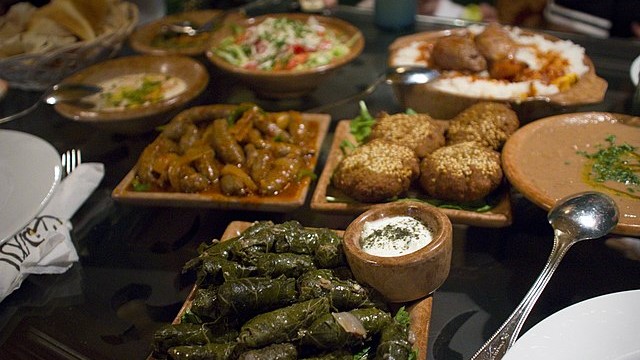On a warm evening in downtown Cairo, the air is thick with the scent of sizzling meat, frying onions, and freshly baked bread. Vendors line the streets, their carts lit by bare bulbs, drawing clusters of families, office workers, and students eager for a quick bite. In this atmosphere of noise and color, Egypt’s culinary traditions are played out in their most accessible form: street food.
Few dishes embody the nation’s spirit as fully as koshari. Served from modest stalls and humble storefronts, it is a filling mix of rice, lentils, and pasta, crowned with tangy tomato sauce and a layer of crisp fried onions. For decades, koshari has been a staple for Cairo’s working class, a meal that is inexpensive, nourishing, and unmistakably communal. Its history, born from the melding of influences during Egypt’s modern era, mirrors the country’s resilience and adaptability.
Another cornerstone of the street food scene is ta’ameya, Egypt’s distinctive version of falafel. Unlike its chickpea-based counterpart elsewhere in the Middle East, ta’ameya relies on fava beans, blended with fresh herbs and spices, then fried to a golden crisp. Served in soft pita bread with salad and tahini, it is both simple and deeply flavorful. Vendors across Cairo prepare it fresh throughout the day, turning it into a fast favorite among locals and visitors alike.
Sweets, too, hold pride of place. Konafa, a dessert of delicate pastry strands baked with nuts or cream and soaked in syrup, remains a perennial favorite. Its preparation, often performed in full view of passersby, draws attention almost as much as its taste. Paired with black tea or strong coffee, it is as much a social ritual as it is a dessert.
Grilled meats complete the tableau. Skewers of kebab and kofta, marinated in spices and cooked over open flames, send smoke curling into the night air. They are typically accompanied by flatbread, salads, and dips, encouraging diners to assemble each bite to their preference. The result is both a meal and a shared experience, one that reinforces the communal rhythm of Egyptian dining.
Cairo’s street food is more than a convenience; it is a living archive of culture and history. Recipes are passed from generation to generation, shaped by regional variations and personal touches. Each dish carries stories of migration, adaptation, and continuity, making the city’s sidewalks as vital to understanding Egypt’s identity as its monuments and museums.
In the bustle of the capital, where the past and present continually overlap, the street food scene offers a reminder that culture thrives not only in grand institutions but also in the everyday act of sharing a meal. Cairo’s flavors—bold, layered, and deeply rooted—remain a testament to the city itself.
Sources:
- Abaza, Mona. “Food and Cultural Identity in Contemporary Cairo.” International Journal of Middle East Studies, vol. 37, no. 3, 2005, pp. 345–368.
- Peterson, Mark Allen. Connected in Cairo: Growing Up Cosmopolitan in the Modern Middle East. Indiana University Press, 2011.
- Elshahed, Mohamed. “Street Food in Cairo: Culinary Traditions in an Urban Landscape.” Cairo Observer, 2019.
- Rowe, Paul. “Egyptian Cuisine as Cultural Expression.” Middle East Journal of Culture and Communication, vol. 12, no. 2, 2020.

